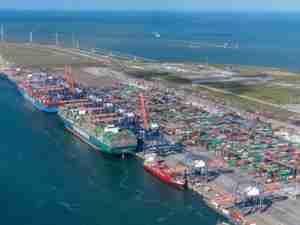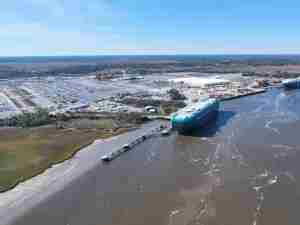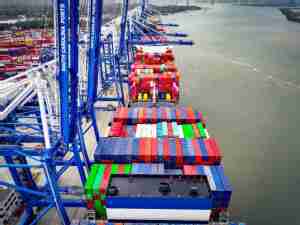For the operation of the terminal, the Port of Rotterdam Authority is currently in negotiations with Van Uden Stevedoring, which currently has a terminal at Merwehaven, an area that has been earmarked for future urban development.
SUPPLY OF INDUSTRIAL MINERALS TO EUROPE
The European Union is a highly industrialised part of the world. Therefore, raw materials supply is of key importance for the competitive position of many industrial sectors.
For geological reasons the world distribution of non-energy resources is very uneven. Europe lacks specific raw materials and has to compete for them on world markets. Now that commodity prices are rising, there is a greater awareness that the European industry is dependent on imports. In the case of metallic minerals like iron ore, Europe’s capacity to provide in its own supply through domestic extraction is very limited. For construction minerals (in particular aggregates), Europe is self-sufficient. For certain industrial minerals such as feldspar, kaolin, magnesite, gypsum and potash, the EU continues to be an important producer. However, the EU extraction industry is under pressure. For most member states, the provision of minerals has a low priority and the industry has an impact on the environment. Therefore the minerals extracting industry faces land-use constraints (“the license to operate”).
Limiting the EU supply will not diminish demand, thus increasing overseas imports. Trade in industrial minerals has grown. In 2004 extra-EU imports of industrial minerals amounted to 23.7 million tons. However, rapidly developing countries like China and India are also hungry for raw materials. This has implications on trade. One example is that the Chinese government discourages exports of its raw minerals with export duties on important industrial minerals. European users of these materials will have to look for other sources. Intra European trade, for instance with Turkey, is on the rise.
Given the growing import dependency of the EU industry, logistics play an increasingly important role. In the logistic chain from supplier tot consumer, ports are a vital link. The port is an important link in the logistics chain from producer to end-user. Rotterdam is the largest port in Europe for the import of iron ore and coal.
Also for minerals and other dry bulk, Rotterdam is the European gateway. Minerals handled in the port are for instance magnesite, ilmenite, concentrates, bauxite and alumina, vermiculite, feldspar and kaolin. Other dry bulk includes e.g. aggregates, pig iron and (calcined) pet coke. With a volume of more than 12 million tons, Rotterdam has a market share of 25% for all overseas imports and exports in Western Europe.
However, this figure is an underestimation because a growing part of minerals flows is transported in containers. Especially high value minerals in sacks or big bags are transported in freight containers.
As is well known, Rotterdam is the largest container port in Europe.
The accessibility of the port of Rotterdam is unrivalled. No other port in Europe can guarantee the same unrestricted deep-water facilities, unhampered by locks or tides. Therefore, the more common handy size vessels are no problem at all.
When entering the port a number of specialized terminals and facilities meet all requirements regarding transshipment, contamination-free covered and open storage. As well, as value added activities and distribution. These companies offer high discharge rates leading to quick turn-around times










